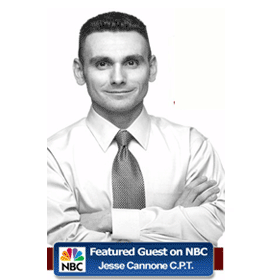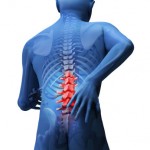Back Pain Relief Exercises And Stretches
Doctors have opined that most of us will suffer from back pain at some time during our lives. While some gets on with it and lead a normal life, others may become immobile or partially disabled, becoming unable to carry out their normal activities. Doctors have advised not to ignore the pain in the back during the initial stages as it is a warning in advance of more serious complications that arise out of back pain.
The type of lifestyle we live is considered to be the most vital factor that influences the cause of back pain. Sitting for long hours in an unergonomic position is considered to be a major cause of back pain. Being overweight, lifting items incorrectly, and over stretching are some other causes of back pain as diagnosed by orthopaedics.
Herniation of the lumbar disc is caused by excess pressure on the joints due to the contraction of the muscles, which results in the secretion of fluid that creates pressure on the adjacent nerves giving rise to back pain. According to recent medical research, mobility of the body and back pain relief exercises and stretches is an effective way of preventing back pain. Doctors have advised to go the gym and do stretching exercises, which strengthens the core muscles and helps in holding the spinal cord in position. Walking, climbing the stairs, and regular exercise helps to prevent back pain.
Back Pain Relief Exercises And Stretches
Back Pain Relief Exercises And Stretches Can Go A Long Way In Alleviating Severe Back Pain - If You Do Them Correctly
Why does back pain occur?
As we have seen from the previous scenario, lifestyle can be a major predictor of back pain. Generally speaking, the more sedentary a person is, the more likely he or she is to develop problems. This is especially relevant when considering postures such as sitting for long periods in slouched positions or unergonomic workspaces.
In such cases the core muscles that are not being used become weak and stop supporting the spine. Consequently more pressure is placed on important structures (discs/joints/nerves) in the back, which over time start to complain and give rise to pain.
Other factors that often contribute to back pain include being overweight, lifting incorrectly, overstretching or repetitive movements, which lead to overuse injuries.
What structures may be at fault?
Perhaps the question I am most often asked by my patients is whether they have suffered a “slipped disc”, known medically as a disc herniation. This is when there is problem with the rubbery material that sits between each bone of the spine, and which act as small shock absorbers. If too much stress is placed through the discs, over time they can develop small cracks, which can eventually lead to some of the watery material inside escaping. This material may start to place pressure on adjacent nerves, which produce pain.
Another common problem arises from the joints that run down either side of the spine and connect one bone to another. If these joints are kept in one position for too long, over time they can become stiff and sore. Often as people get older these joints are affected by osteoarthritis, which causes too much friction in the spine as the rubbery cartilage between the bones wears down.
If there is a problem with the discs, joints or nerves within the back, the muscles overlying these structures can become tight and go into spasm, causing more pain.
If I already have back pain, what can I do about it?
Well the first thing to do is do something about it. The problem is only likely to get worse when it is ignored. Back pain which has persisted for over twelve weeks is classed as chronic and is often much harder to treat effectively. If you already have pain, think about what things may be aggravating the symptoms. Is the pain worse when you are lying in a certain position in bed, when you are lifting, or after you have been sitting at work for an hour? If you can identify a pattern between your daily activities and the symptoms, try changing these factors as a first line treatment.
Recent studies show that keeping active is key to treating back pain. Gradually building up your activity levels is often the first key step towards self-help. Enrolling in a gym, or attending an exercise class such as Pilates, which focuses on strengthening the core muscles that support the back, can help enormously.
Begin by taking small measures such as walking over to talk to a colleague rather than sending them an e-mail, taking a short walk at lunch instead of eating at your desk, or climbing the two flights of stairs to your apartment instead of catching the lift.
Performing exercises two or three times a day can prove extremely beneficial in breaking up the static positions that we adopt at work and home. Every hour try standing up at the desk and performing some basic stretching exercises to replenish the muscles and reduce stiffness. At home, perform exercises after getting up, when you get home from work, and before you go to bed.
What if I my back is just too painful to do anything?
If you have experienced an acute episode of back pain, you should seek medical attention as soon as possible. In this stage you may benefit from an assessment by a doctor or physiotherapist. They will be able to confirm what is wrong, and apply pain-relieving treatments, which will help you to safely increase your activity levels. These treatments may include electrotherapy, acupuncture, massage, joint mobilisation or a gentle exercise programme.
See rest of article
Here is an excellent video showing 3 simple but effective stretches to ease your pain. Just do a these 3 times a day for 5 minutes and you should see improvement within 10 days. If not – go and see your doctor or medical health professional.
Although, there are lots of treatments for back pain relief exercises and stretches available for back pain, for many people there can be no other successful alternative to regular exercise, which can provide adequate relief for back pain.
For more information on back pain exercises get a copy of The 7 Day Back Pain cure that is available for free on the top right hand side of this page.
You might also like:
Tags: Back Pain Relief Exercise Yoga, Back Pain Relief Exercises, Back Pain Relief Exercises And Stretches, exercises for back pain relief, pain relief, Upper Back Pain Relief Exercises And Stretches















